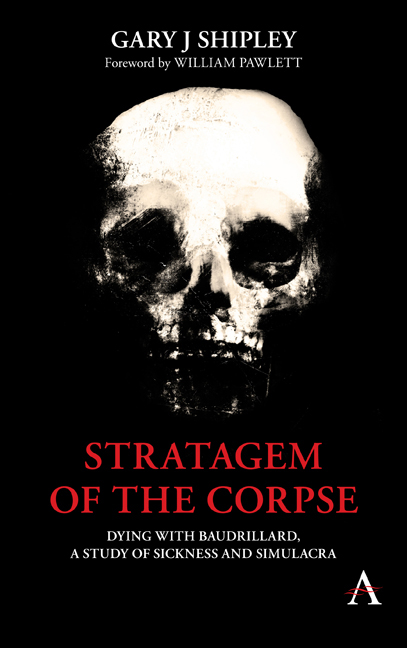Book contents
- Frontmatter
- Dedication
- Contents
- Acknowledgements
- Foreword by Pawletts William
- Introduction
- Chapter 1 On Decay and Other Synthetics
- Chapter 2 Stratagem of the Corpse
- Chapter 3 A Bleak Non-History of History
- Chapter 4 The Hyperactivity of Objects
- Chapter 5 The Unnamable Catastrophe
- Chapter 6 A Cure for Vertigo
- Chapter 7 Chance and the Temporality of Death
- Chapter 8 The Possibility of Nihilism
- Chapter 9 Smell-O-Vision: The Murder Show
- Chapter 10 The Evil Death
- Chapter 11 False Confessions and the Madness of Death: Making Death Speak
- Chapter 12 Black Light: Nigredo and Catastrophe
- Appendix 1 Whiteout: Spatiotemporal Interstices, Necropresence and the Immortality of Now
- Appendix 2 Pure Dreaming: Radicalized and Vermiculated Thought, or Death as an Earworm
- Appendix 3 The Non-Existence of the Scream
- Index
Chapter 10 - The Evil Death
Published online by Cambridge University Press: 20 February 2020
- Frontmatter
- Dedication
- Contents
- Acknowledgements
- Foreword by Pawletts William
- Introduction
- Chapter 1 On Decay and Other Synthetics
- Chapter 2 Stratagem of the Corpse
- Chapter 3 A Bleak Non-History of History
- Chapter 4 The Hyperactivity of Objects
- Chapter 5 The Unnamable Catastrophe
- Chapter 6 A Cure for Vertigo
- Chapter 7 Chance and the Temporality of Death
- Chapter 8 The Possibility of Nihilism
- Chapter 9 Smell-O-Vision: The Murder Show
- Chapter 10 The Evil Death
- Chapter 11 False Confessions and the Madness of Death: Making Death Speak
- Chapter 12 Black Light: Nigredo and Catastrophe
- Appendix 1 Whiteout: Spatiotemporal Interstices, Necropresence and the Immortality of Now
- Appendix 2 Pure Dreaming: Radicalized and Vermiculated Thought, or Death as an Earworm
- Appendix 3 The Non-Existence of the Scream
- Index
Summary
Evil and death can be thought of as Baudrillardian noumena:
Of evil in the pure state it is impossible to speak. […] The sovereign hypothesis, the hypothesis of evil, is that man is not good by nature, not because he might be said to be bad, but because he is perfect as he is.
In this way every detail of the world is perfect if it is not referred to some larger set. / In this way everything is perfect if it is not referred to its idea. / In this way the nothing is perfect since it is set against nothing. / And in this way evil is perfect when left to itself, to its own evil genius.
Evil is a confused, impenetrable idea. It is enigmatic in its very essence.
Now, a tiny confused idea is always greater than a very big idea that is absolutely clear. […] This impossibility of thinking evil is matched only by the impossibility of imagining death.
Good is transparent: you can see through it. / Evil, by contrast, shows through: it is what you see when you see through. Or alternatively, evil is the first hypothesis, the first supposition.
Both are sense-making without themselves making sense. Both make the world available without themselves being available. Both can be logically inferred from our experience but are not themselves experienced. A quick survey of Kant's position will help realize the connections in more detail, before concentrating on Baudrillard's agenda, and how death and evil figure in a pessimistic account of the world.
- Type
- Chapter
- Information
- Stratagem of the CorpseDying with Baudrillard, a Study of Sickness and Simulacra, pp. 121 - 140Publisher: Anthem PressPrint publication year: 2020



